Only claimants who are pursuing a claim for loss of earnings or vocational opportunity will meet with a vocational assessor.
The role of the vocational assessor is to perform a comprehensive assessment and to identify whether the claimant is fit to return to their pre-injury occupation following their personal injury.
This assessment involves an evaluation of medical and psychological factors, educational background, social behaviours, attitudes, values, work skills and abilities.
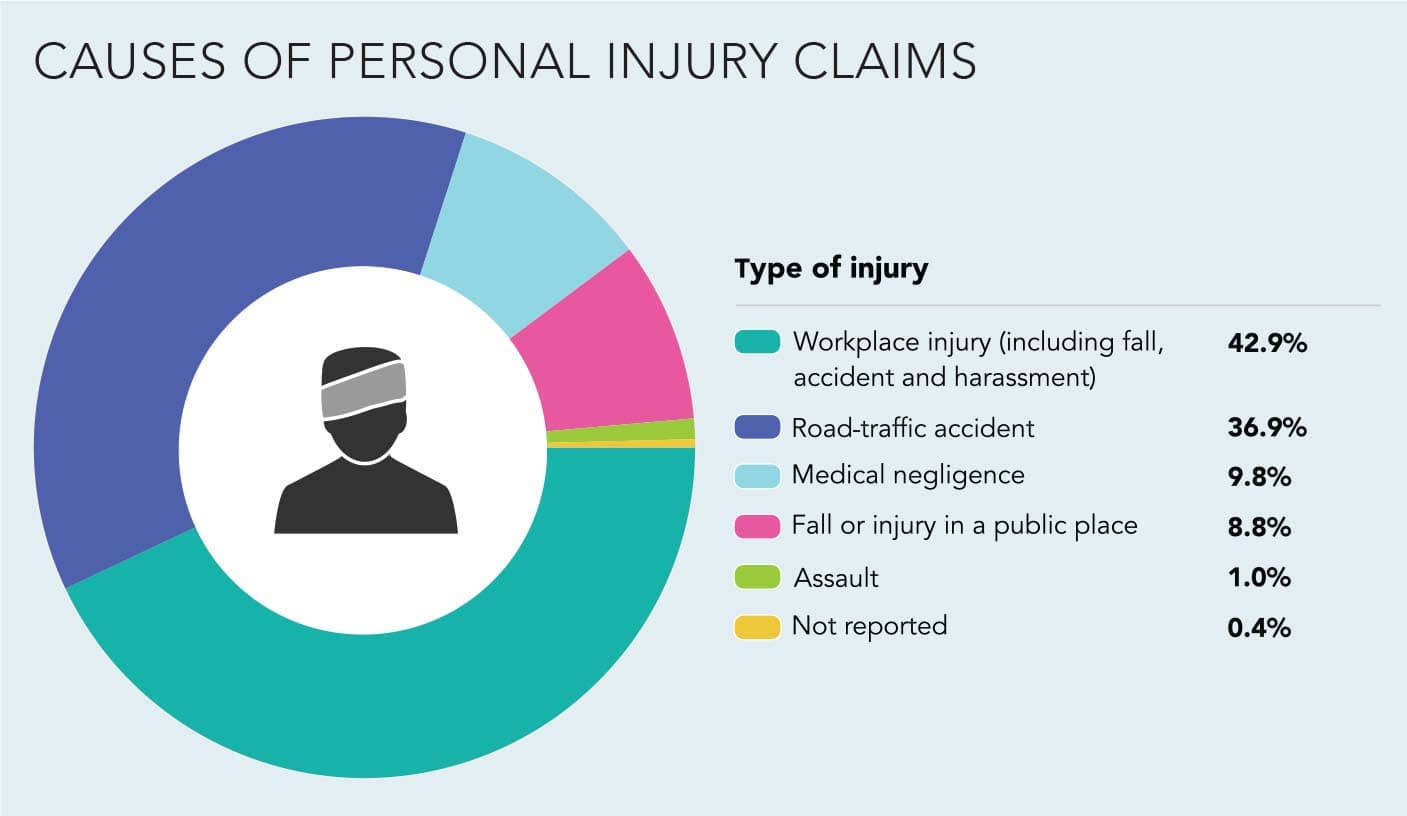
If a return to their former job is not possible, then it is the vocational assessor’s role to identify alternative jobs or further training that will be appropriate for the claimant.
The vocational assessor also establishes the claimant’s post-injury earning potential – a vital determining factor in the resulting report.
A practising vocational assessor should hold professional qualifications in the area of rehabilitation and should have experience working directly with individuals who have acquired physical, cognitive and psychological disabilities.
High standards
It is advisable that a vocational assessor be a qualified occupational therapist registered with CORU, the State’s multi-profession health regulator. CORU’s role is to protect the public by promoting high standards of professional conduct, education, training and competence through statutory registration.
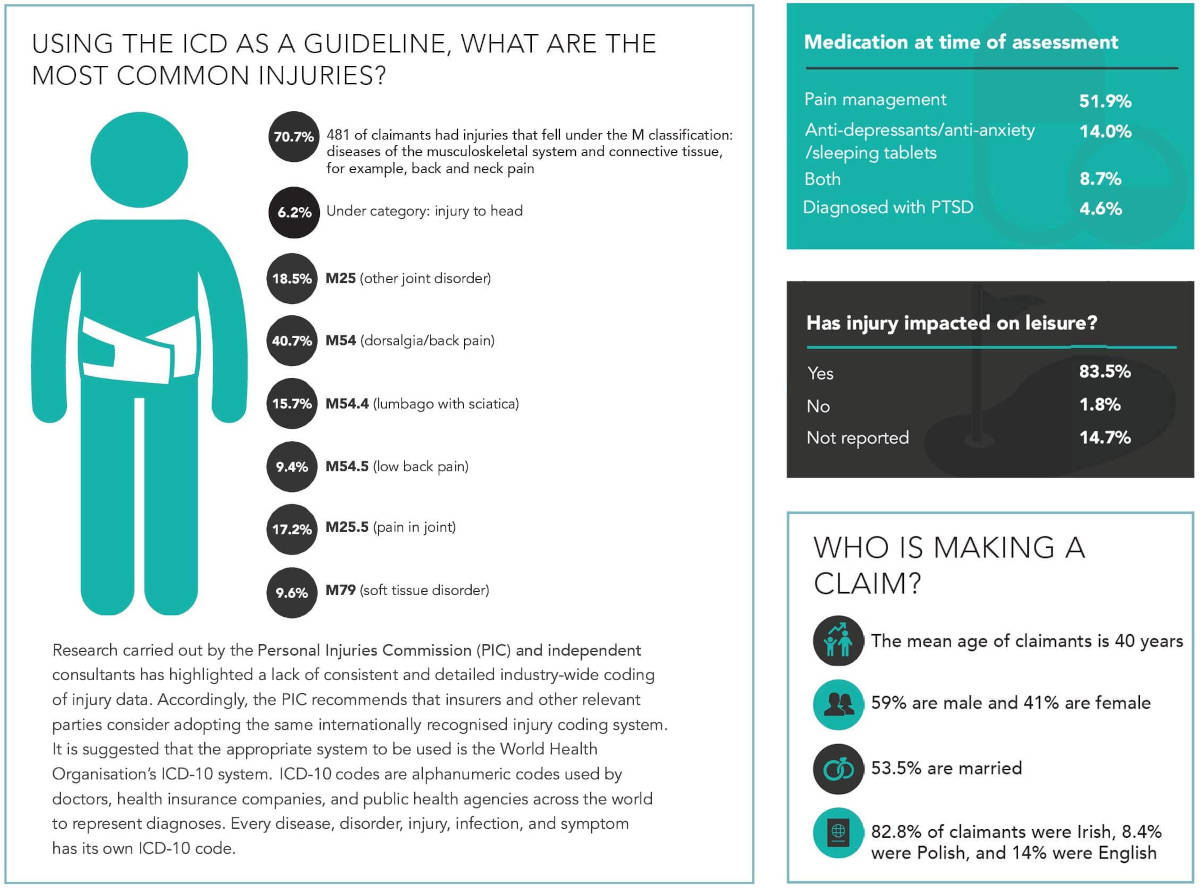
When briefing a vocational assessor, it is important that solicitors are fully aware of the qualifications the assessor holds. Solicitors should satisfy themselves that their expert is regulated and answerable to a governing body.
In 2019, PIAB’s annual conference reported that an estimated 50,000 personal injury claims are made annually in Ireland.
Approximately 1,800 claims are settled through the courts, but the majority are settled directly. There is lack of transparency in relation to the overall number of claims, compensation values, and associated costs.
In over a decade of performing vocational assessments as an expert occupational therapist, I have met hundreds of claimants. The purpose of this article is to share the statistical findings of a rigorous clinical audit I completed in 2019.
For this audit, I analysed and dissected 680 vocational assessments. The findings provide rich data about the individuals pursuing claims for loss of earnings through the High Court, and the types of injuries involved.
Summary of results
The mean age of claimants is 40 years, and the majority suffer from musculoskeletal injuries, such as dorsalgia (back pain) and/or back pain that radiates into their legs (lumbago with sciatica). Post-traumatic stress disorder was diagnosed in 4.6% of individuals.
The data below shows that the most common type of injury is workplace related, with road-traffic accidents the second most frequent cause of injury.
Do claimants work?
The following graphs demonstrate that more than 75% of people worked before their injury (either full or part-time), whereas over 50% are unemployed post injury.
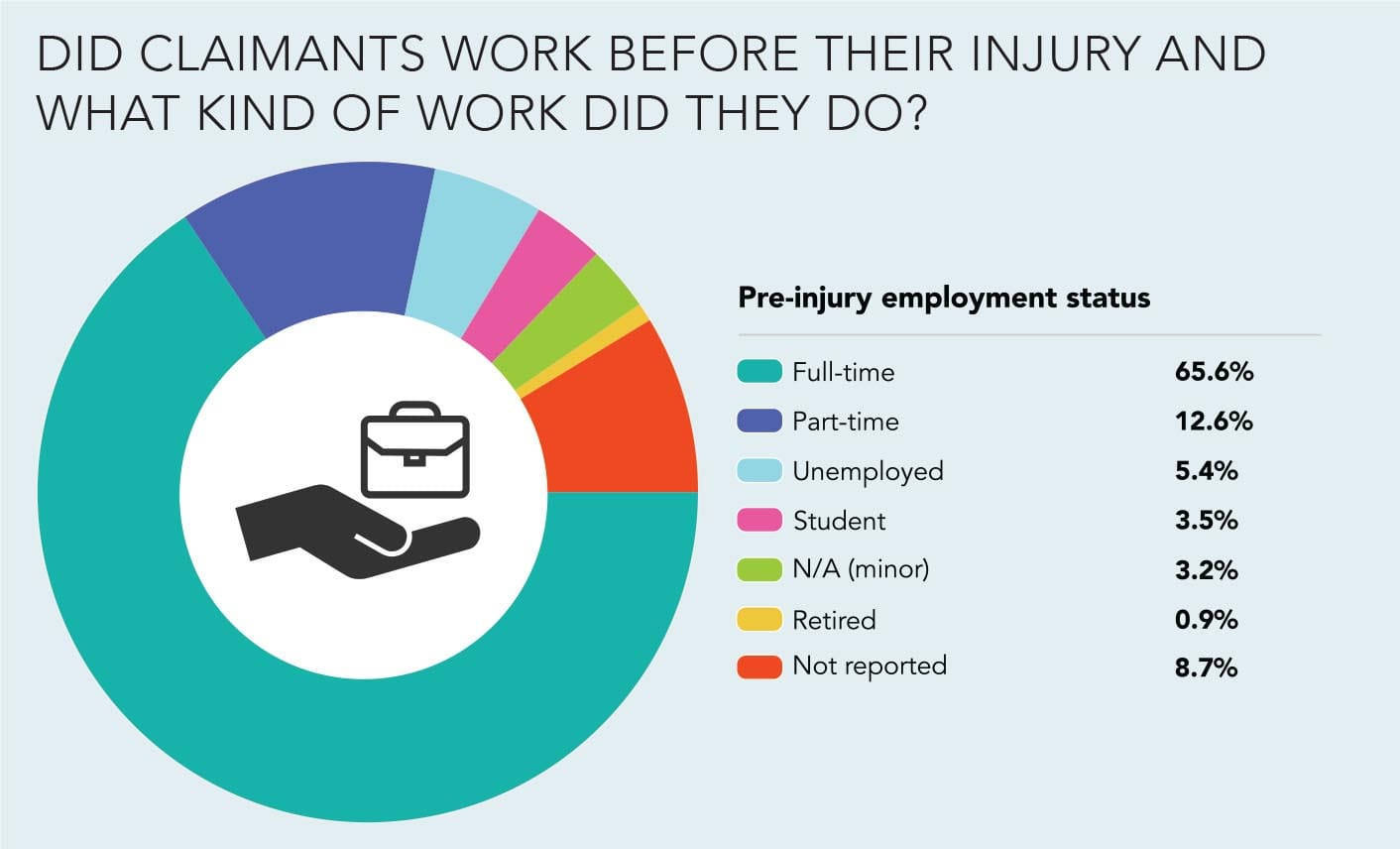
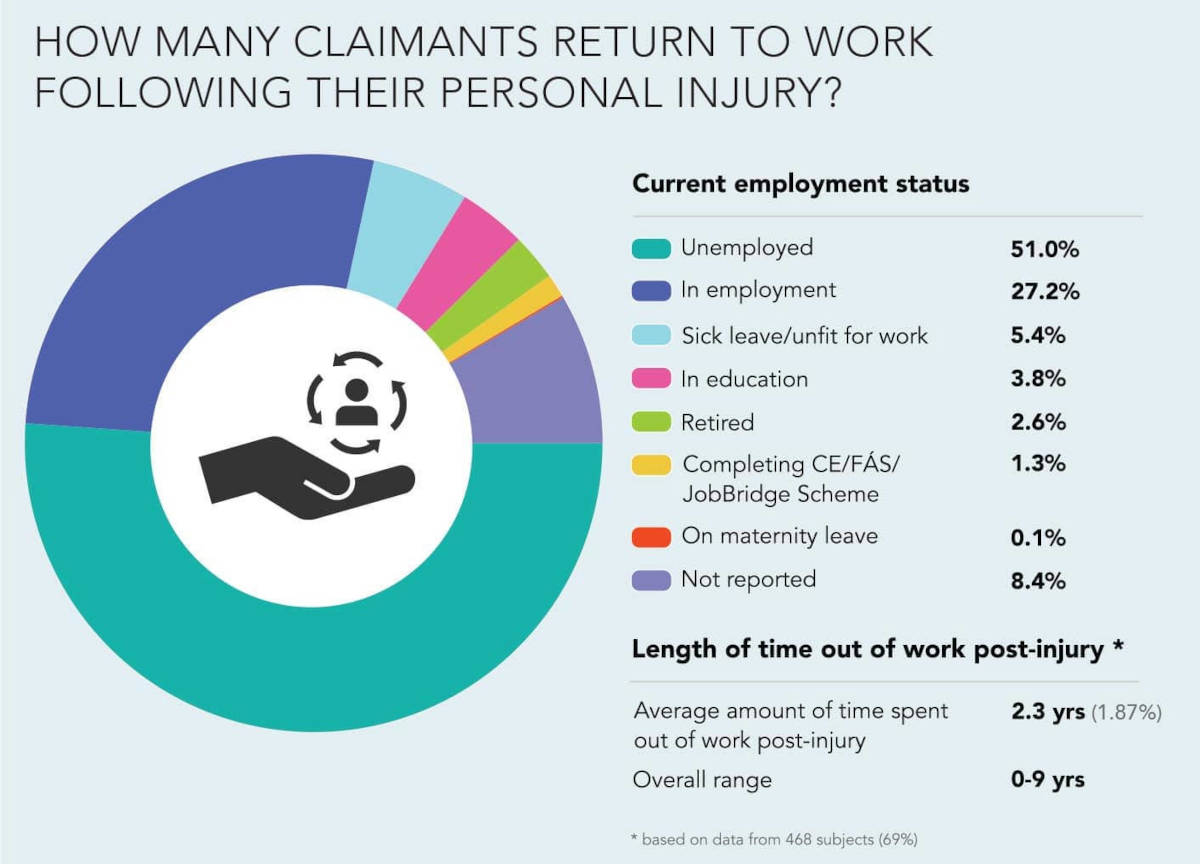
Do ‘educated’ people take claims?
The 2016 census reported that 42% of people in Ireland had a third-level qualification(that is, levels 6-10 in the National Framework of Qualifications). My audit demonstrates that individuals with a lower level of education are more likely to pursue a claim for loss of earnings. Over 55% of claimants I met did not hold a third-level qualification.
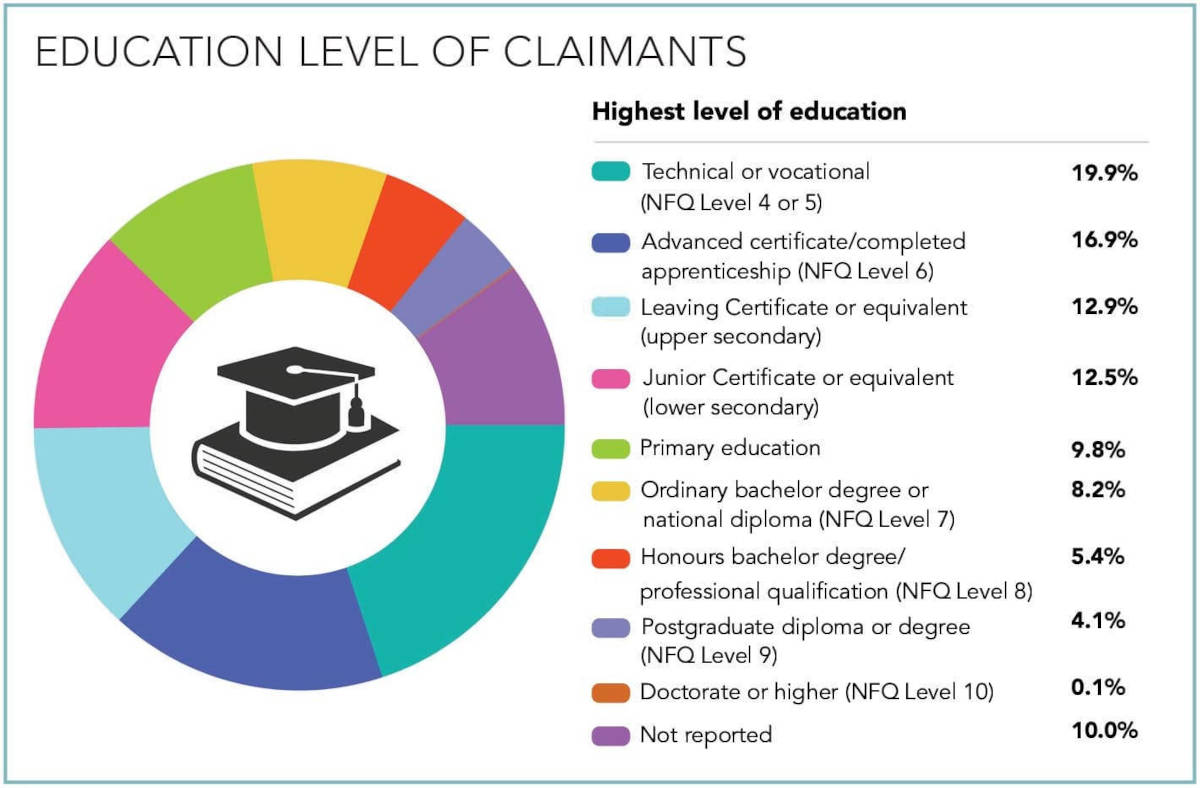
Socio-economic group most likely to pursue claims
The census looks at socio-economic groups and classifies the population into one of ten categories, based on the skill and educational attainment of their current or former occupation.
According to the census, non-manual workers are the largest socio-economic group in Ireland, accounting for 20.9% of the population. This correlates with my findings, which demonstrate that non-manual workers are the largest cohort of individuals pursuing a claim for loss of earnings (24.3%).
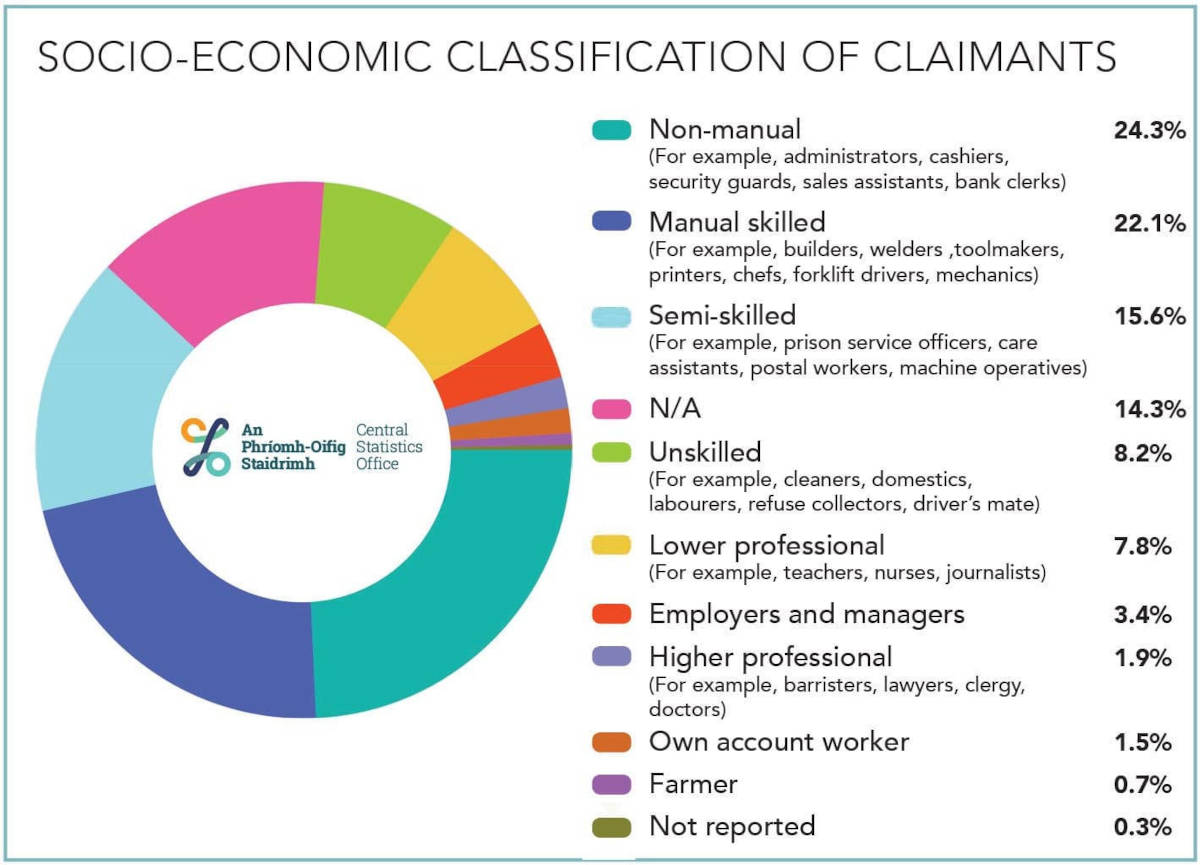
According to the census, the next largest socio-economic group is ‘employers and managers’, accounting for 15.44% of the population. However, the audit shows that only 3.4% of this group make personal-injury claims.
Lower professionals, making up 13.1% of the population, only gave rise to 7.8% of the claims I dealt with. Higher professionals account for 7.12% of the Irish population, but only accounted for 1.9% of the claims in this audit.
What is striking is that only 7.55% of the Irish population are manual skilled workers, yet they accounted for 22% of all individuals that I met who are pursuing a claim for loss of earnings.
Early intervention
The conclusion to be drawn from this audit is that workers in the professional and employer/managerial categories are less likely to pursue claims for loss of earnings.
Over 50% of claimants are in receipt of a formal disability payment from the Depart-ment of Employment and Social Protection when they present for their vocational assessment. Research shows that fear of losing entitlements and not re-qualifying for benefit payments can deter people from seeking employment (NESC, 2014).
The most striking fact that the audit demonstrates is that more than 75% of people worked before their injury (either full or part-time), whereas over 50% are unemployed post-injury.
The likelihood of a return to work after a musculoskeletal injury is greatest in the first month, and becomes less likely with the passage of time, and least likely once the person has lost their job.
Assessment
The vocational assessment is completed on average 3.8 years after the injury, which is far too late to have a positive impact on a claimant’s future employment status.
It is abundantly clear that the sooner solicitors engage the services of vocational assessors in the legal process, the better the outcome for claimants.
The expert intervention of a qualified vocational assessor at an earlier stage provides these individuals with advice and guidance to assist with a return to work in a much more meaningful way.
